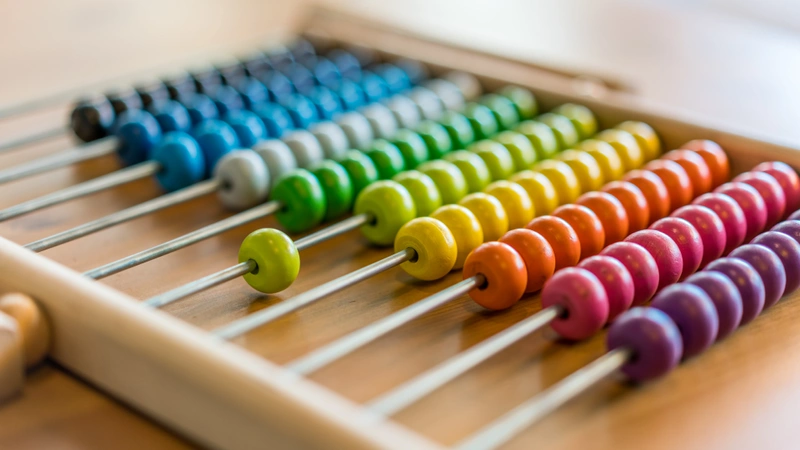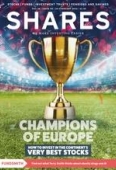How intangibles can be used to identify great businesses

This article discusses the increasing importance of intangible assets over tangible or physical assets and explains how investors can exploit them to uncover great businesses.
One of the iron-clad laws of economics is that high returns on capital are eroded over time by the effects of competition. Reversion to the mean or average is almost as inevitable as death and taxes for most companies.
Famed investor Warren Buffett’s long time business partner Charlie Munger put it succinctly: ‘We have found in a long life that one competitor is frequently enough to ruin a business.’
However, there are companies which have maintained higher than average returns on capital for several years. Fundsmith founder Terry Smith is always on the look out for these ‘quality compounders’ as they are often called.
In his owner’s manual, Smith says: ‘The businesses we seek to invest in do something very unusual: they break the rule of mean reversion that states returns must revert to the average as new capital is attracted to business activities earning super-normal returns.’
What makes them different according to Smith is these companies possess intangible assets which gives them a competitive edge. By their very nature intangible assets can be difficult for a competitor to replicate no matter how much capital it is willing to spend.
The types of intangibles Smith likes include brand names, dominant market share, patents, distribution networks, installed bases and client relationships.
All these competitive advantages create a financial ‘moat’ which help to protect higher than average returns on capital.
Brands create a powerful ‘mindshare’, which increases the odds that a consumer will continue to buy a particular product. Branded products can also be sold at a premium price.
Installed bases are difficult for competitors to dislodge due to high switching costs and retraining, which may deter clients from moving their business.
Dominant market share is very powerful if a company can achieve it, and is one reason the CMA (Competition and Markets Authority) and overseas competition regulators take an interest when two large companies merge.
Economist James Bessen at Boston University studies ‘superstar’ technology companies. His work shows these firms substantially outspend competitors on intangible assets.
Bessen documents that US firms spend over $200 billion each year on proprietary software. Spending on proprietary software is growing faster than R&D, acquisitions and advertising.
DOWNSIDES TO INTANGIBLES
However, there are downsides to intangible assets as research by Morgan Stanley reveals. Intangibles can be stolen more easily than tangibles, even when intellectual property rights are granted.
For example, a Chinese entrepreneur named Wang Zing recreated Facebook’s website and later cloned Twitter (now X) and Groupon (GRPN:NASDAQ).
Proprietary software can become obsolete when it is replaced by a new improved version. Brand names can become worthless when a company fails. Many tangible assets have scrap value whereas intangibles do not.
Finally, it is worth noting that developing intellectual property isn’t always the best strategy to protect returns on capital. A good example is provided by General Motors (GM:NYSE) which developed the automatic transmission in 1940.
Despite patent protection the technology had diffused to the rest of the automotive industry within a decade.
As Bessen argues, successful firms today develop custom software rather than looking to license their technology because they do not want to lose their source of differentiation.
Another example of a company not pursuing the patent route is Coca-Cola (KO:NYSE), which was founded in 1892 in Atlanta, Georgia.
The company wisely decided to keep the ingredients and method behind its syrup secret rather than reveal them through filing patents.
It has proven to be a great decision. Today Coke is the one of the most popular drinks in the world accounting for 3% of all beverages consumed.
HOW ARE INTANGIBLES TREATED IN THE ACCOUNTS?
There is a quote usually attributed to Albert Einstein which is quite apposite here: ‘Not everything that can be counted counts, and not everything that counts can be counted.’
Intangible assets fall into the second category because they are potentially very valuable but do not appear as discrete items in a company’s accounts.
A common intangible asset is goodwill which is created after an acquisition when a buyer pays a premium to book value.
Under UK accounting rules, goodwill is amortised (or reduced) over 10 years or however long management deems appropriate with a maximum permitted life of 20 years. The amount is charged to the profit and loss account.
Drug companies spend a big proportion of their revenues on R&D (research and development) to discover new drugs. R&D investments are usually capitalised (put on the balance sheet as an asset) and amortised over their useful lives.
An intangible asset with a finite useful life is amortised and is subject to annual impairment testing. An intangible asset with an indefinite useful life is not amortised but is still tested annually for impairment.
Brands, trademarks, and trade names can be expected to deliver cash flows indefinitely and are examples of intangibles that are not amortised.
Important information:
These articles are provided by Shares magazine which is published by AJ Bell Media, a part of AJ Bell. Shares is not written by AJ Bell.
Shares is provided for your general information and use and is not a personal recommendation to invest. It is not intended to be relied upon by you in making or not making any investment decisions. The investments referred to in these articles will not be suitable for all investors. If in doubt please seek appropriate independent financial advice.
Investors acting on the information in these articles do so at their own risk and AJ Bell Media and its staff do not accept liability for losses suffered by investors as a result of their investment decisions.
Issue contents
Daniel Coatsworth
Editor's View
Feature
- How Latin American emerging markets compare
- Emerging markets: China positive policy moves, US rates shift and what’s happening in Latin America
- Find out what Terry Smith thinks about obesity drugs and AI
- How intangibles can be used to identify great businesses
- Champions of Europe: how to invest in the continent’s best stocks
- Merger activity in the property sector heats up with bid battle for API
- Why is Diversified Energy launching a tender offer and what are investors’ options?
Great Ideas
News
- Seraphim reaches for the stars with 31% year-to-date gains
- Brakes slammed on Mobico recovery as results delay frustrates investors
- Competition authority finds ‘fundamental concerns’ in the UK housebuilding market
- Berkshire cash hits record $168 billion as deals dry up
- Japan’s Nikkei 225 hits all-time high, but what is the next move for investors?

 magazine
magazine









